Dr. Barton Guthrie Honored
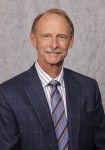 A PROPOSAL TO SUPPORT THE BARTON L. GUTHRIE, M.D., ENDOWED CHAIR IN THE UAB DEPARTMENT OF NEUROSURGERY
A PROPOSAL TO SUPPORT THE BARTON L. GUTHRIE, M.D., ENDOWED CHAIR IN THE UAB DEPARTMENT OF NEUROSURGERY
Barton L. Guthrie, M.D. has led an exceptional career as a world-renowned neurosurgeon, focused on improving treatment for patients with movement disorders such as Parkinson’s disease and tremor as well as for patients with brain tumors. He founded the UAB Deep Brain Stimulator (DBS) program which has become one of the largest in the country, having performed over 1,000 DBS procedures for debilitating movement disorders.
In so doing, he has established a culture in the UAB Department of Neurosurgery that revolves around putting the needs of the patient first and clearly defining the clinical value of neurosurgery for these patients. His innovations in technology and care delivery processes have proven valuable across the country.
Dr. Guthrie’s distinguished career has left an indelible impact on the School of Medicine, and UAB seeks to expand upon his legacy of excellence in patient care and innovation through the creation of the Barton L. Guthrie, M.D., Endowed Chair. The appointment of an endowed chair rewards a physician’s professional contributions, recognizes the value of his/her research endeavors, and safeguards the funding needed to continue these pioneering efforts. A gift to support the Barton L. Guthrie, M.D., Endowed Chair is an opportunity for alumni, faculty, and friends to invest in the future of our specialty, promoting a process committed to analysis and improvement of patient outcome.
32nd Annual J. Garber Galbraith, MD Scientific Session and Lecture Held
The 32nd annual J. Garber Galbraith Lecture was held Friday, Nov. 6, 2015. Karin Muraszko, M.D., Chair and Julian T. Hoff, M.D. Professor, Neurological Surgery at University of Michigan was the invited lecturer.In 2005, Dr. Muraszko was chosen to head the Department of Neurosurgery at the University of Michigan, becoming the first woman to chair an academic neurosurgery department in the United States.
2015 Award Winners:
- Garber Galbraith, MD Research Prize: Elizabeth N. Kuhn, MD
- Griffith R. Harsh III, MD Research Prize: Kimberly P. Kicielinski, MD
- Richard B. Morawetz, MD Research Prize: Joseph H. Miller, MD
Wheeling for Hope, Inc. raises $33,000 for Brain Tumor Research
Donations have provided such items as educational materials for patients and families, funds to sponsor children for Camp Smile-a-Mile, new research lab equipment, and funds to support brain tumor research efforts.
Cathie Robinson, research nurse coordinator for the Department of Neurosurgery, serves as the president of Wheeling for Hope and has been very instrumental in fund raising for the charity and bringing awareness to brain tumors.
If you are interested in learning more or making a donation to Wheeling for Hope, please contact Cathie at cathierobinson@uabmc.edu.
31st Annual J. Garber Galbraith Scientific Session Held October 3 2014
Dr. Stephen Haines is the Lyle A. French Chair and Head of the Department of Neurosurgery. He received his M.D. degree from the University of Vermont and trained in Neurosurgery at the University of Pittsburgh. He received the Van Wagenen Fellowship of the American Association of Neurological Surgeons to study clinical trials at Oxford University in 1981. Prior to his appointment at Minnesota he was Chair of the Department of Neurological Surgery and a founding Co-Director of the Neuroscience Institute at the Medical University of South Carolina. He has been board certified in Neurological Surgery since 1984.
Dr. Haines' primary clinical interests lie in surgery of the skull base, cranial nerves and posterior fossa, pediatric neurosurgery and brain tumors. He has extensive experience in the surgery of acoustic neuroma, trigeminal neuralgia and hemifacial spasm, craniofacial disorders, complex hydrocephalus, pediatric and adult myelodysplasia.
Dr. Haines' primary research interest focuses on the application of advanced clinical research techniques to neurosurgery and the development of resources for the evidence-based practice of neurosurgery. He is a past member of the Editorial Board of the Cochrane Stroke Group and has led his departments' involvement in numerous clinical trials. He has published and lectured extensively on these subjects.
The scientific session was followed by a dinner and award ceremeony held at The Summit Club where the awards were presented for the top three resident presentations as voted on by a independent team of judges. This years award winners were:
J. Garber Galbraith Award for Research - Christoph J. Griessenauer, MD
Griffith Harsh III Award for Research - Joseph H. Miller, MD
Richard Morawetz Award for Research - Paul M. Foreman, MD
The J. Garber Galbraith Scientific Session and Lecture is held annually by the Department of Neurosurgery. The 32nd Annual Session will be held November 6, 2015. For more information, call 205-934-2918.
New device to control seizures proving its worth
In that short time, she can already say, “I’m doing pretty good.”
UAB neurosurgeon Kristen Riley, M.D., implanted the RNS system, developed by NeuroPace, into Conner’s brain.
Read the update on Sarah at http://www.uab.edu/news/focus-on-patient-care/item/5209
Dr. Mark Hadley awarded Department of Defense grant to study acute spinal cord treatment strategies
Dr. Mark N. Hadley, Charles A. and Patsy Collat endowed professor of neurosurgery, 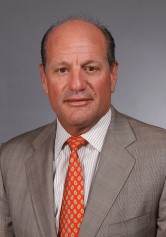 has recently been awarded a Department of Defense Military Medical Research and Development grant to study acute spinal cord treatment strategies. The grant will initiate June 2015.
has recently been awarded a Department of Defense Military Medical Research and Development grant to study acute spinal cord treatment strategies. The grant will initiate June 2015.
The title of the grant is “A Multi-Center, Randomized, Controlled Trial of Cerebrospinal Fluid Drainage in Acute Spinal Cord Injury”. Dr. Hadley is a Co-Investigator of a multi-center study. The study will be conducted at three sites in the United States.
The purpose of the grant is to evaluate the safety and efficacy of cerebrospinal fluid drainage and to provide preliminary clinical efficacy evaluation of combination of cerebrospinal fluid drainage and elevation of mean arterial pressure in patients with acute spinal cord injury.
Pediatric Neurosurgeons to sponsor invitational meeting on Myelomeningocele
The Department of Pediatric Neurosurgery at Children’s of Alabama is sponsoring and coordinating an invitational meeting of Pediatric Neurosurgeons and researchers in Myelomeningocele on September 10-13, 2014. The meeting will incorporate a process of critical review of the literature with the ultimate goal of developing evidence based guidelines for a child with a Myelomeningocele. The meeting is being spear headed by Dr. Jeffrey Blount and Dr. Jerry Oakes, professors of Neurosurgery at the University of Alabama at Birmingham.
There will be an opening reception on Wednesday, September 10 followed by sessions on Thursday, September 11 and Friday, September 12. Sessions will include critical discussions and review of papers on Myelomeningocele surrounding a variety of topics (including acute/chronic management of hydrocephalus, in-utero surgery of MMC, management of the C2M and management of the tethered spinal cord). A concluding session on will be held Saturday, September 13 to summarize and lay the ground work for the next stage of the guidelines development process.
All UAB Department of Neurosurgery faculty and residents are invited.
Inquiries can be made to Pediatric Neurosurgery at Children’s of Alabama by calling 205-638-9653.
UAB implants responsive neurostimulator for epilepsy seizure control
UAB is the first medical center in the Southeast to implant a new type of electrical stimulator to control seizures in patients with epilepsy.
Written by Bob Shepard On June 18, neurosurgeons at the University of Alabama at Birmingham implanted a new type of electrical stimulator to control seizures in patients with difficult-to-control epilepsy.
It marked the first time in the Southeast the RNS system by NeuroPace had been implanted since the device gained FDA approval in November 2013. The first patient was a 24-year-old woman from central Alabama.
RNS stands for responsive neurostimulation.
“It is designed to record patient’s specific brain activity and recognize patterns that are associated with seizures,” said Kristen Riley, M.D., associate professor in the Department of Neurosurgery. “The RNS system then delivers stimulation in order to help modulate and control the seizures.”
The system consists of electrodes attached by leads to a generator which can communicate with a computer. The generator is curved so that it can be placed within a patient’s skull. It is a little bigger than a flash drive.
“We drill a trough for the device so that it is flush within the skull,” said Riley. “There is not a raised area; it’s basically hidden within the skull.”
The electrodes are placed near the location in the brain where a patient’s seizures are triggered. Jerzy Szaflarski, M.D., Ph.D., professor in the Department of Neurology and director of the UAB Epilepsy Center, says the RNS system can be customized for each individual patient so that it learns which patterns of brain activity lead to seizures in that patient. He says data from research studies dating back several years indicate that many patients will respond to the stimulation and have significant reduction in their seizures.
“This is not a treatment that will cure epilepsy,” he said. “This is a treatment that will help control seizures in a very specific group of patients who are not otherwise candidates for surgery. I don’t expect too many patients to become seizure-free; but if we can decrease their seizures by even half, we can make huge improvements in their lives.”
The RNS system is for patients with severe seizures who do not respond to medications and are not candidates for surgery because the location of their seizure onset is at a sensitive part of the brain. It is also only for patients whose seizure onset can be traced to just one or two locations in the brain.
“We’re very excited to offer this therapy to our patients who are not candidates for more traditional therapies for epilepsy,” said Szaflarski. “We see multiple patients like that every year, and the RNS system could make a huge difference in the lives of those patients. There is already data to show that the quality of life of those patients has improved significantly with RNS.”
For more information on the RNS system, contact the UAB Epilepsy Center or make an appointment via the Kirklin Clinic at 205-801-8986.
UAB Neurosurgery Residents Attend Advances in Brain Tumor Management Conference
The Department of Neurosurgery residents recently attended the Advances in Brain Tumor Management Conference jointly sponsored by the Columbia University Department of Neurosurgery and the American Association of Surgeons. The Conference was held June 6, 2014 in New York.
Dr. Mark Hadley, UAB neurosurgeon, was one of the presenters at the conference. He spoke on “Perfusion Pressure Management in the Peri-operative Treatment of Spinal Cord Pathology”.
The learning objectives of the conference were:
- Recognize CNS malignancies and other neurological diseases.
- Understand diagnosis and treatment of brain tumors and other neurological diseases.
- Discuss a multidisciplinary approach to treating brain tumors and other neurological diseases.
Coaches, Parents Offered Brain Injury Information at "Cutting Edge Concussion Summit" Conference
Children’s of Alabama was host to the inaugural “Cutting Edge Concussion Summit- Maintaining the Competitive Edge” on Friday, June 13, at 8 a.m. in its Bradley Lecture Center. The Summit attracted approximately 200 attendees.
The day-long conference was open to the public and hosted by UAB Sports Medicine at Children’s in conjunction with the Wise Up! Initiative. The conference featured presentations geared to coaches, athletic trainers and parents. Sessions included Critical Changes in Concussion Culture, Epidemiology of Sports and Recreation-Related TBI, and a panel discussion on Prolonged Recovery from Concussion among others.
“The evolution of concussion legislation and best practice is ongoing,” said Drew Ferguson, director of UAB Sports Medicine at Children’s of Alabama. “It’s imperative to understand how young athletes are affected by concussion symptoms in both the short term and the long term. The more parents, athletic trainers and coaches know about concussions, the safer our young athletes will be.”
Speakers included former college and NFL players including John Parker Wilson, Chris Redman and Tyler Watts as well as representatives from the CDC, renowned pediatric neurosurgeon Dr. Jim Johnston and Alabama High School Athletic Association Director, Steve Savarese. Topics that were addressed included Return-to-Play and Return-to –Think legislature as well as helmet standards, diagnosis and management of concussions and establishing a multi-disciplinary concussion program. Joel Stitzel and Alex Powers from Wake Forest University presented their groundbreaking research on impact biomechanics of youth football.
Children’s of Alabama has provided specialized medical care for ill and injured children across the state and throughout the southeastern U.S. since 1911. For the past four years, Children’s has been ranked among the best children’s hospital programs in the nation by US News & World Report. Last year, patients made more than 670,000 outpatient and nearly 14,000 inpatient visits to Children’s from every county in Alabama and from 41 other states and four foreign countries. With more than 2 million square feet, it is the third largest pediatric medical facility in the U.S. Children’s offers inpatient and outpatient services across its Russell Campus on Birmingham’s historic Southside with additional outpatient services provided at Children’s South and Children’s on 3rd. Primary care is provided at more than a dozen medical offices in communities across central Alabama. Children’s of Alabama is the only medical center in Alabama dedicated solely to the care and treatment of children. It is a private, not-for-profit medical center that serves as the primary site of the University of Alabama at Birmingham (UAB) pediatric medicine, surgery, research and residency programs. Children’s recently moved much of its inpatient services into a new building named The Benjamin Russell Hospital for Children. More information is available at www.childrensal.org.
Original source: https://www.childrensal.org/body.cfm?id=1730&action=detail&ref=313
UAB-developed viral therapy shows promise against brain tumors
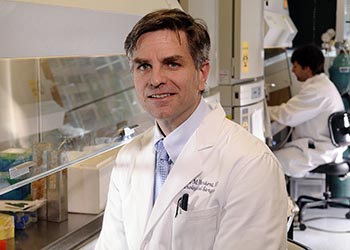 Birmingham report a genetically engineered herpes simplex viral therapy is safe when used in conjunction with radiation in the treatment of malignant gliomas, one of the most deadly forms of brain cancer.
Birmingham report a genetically engineered herpes simplex viral therapy is safe when used in conjunction with radiation in the treatment of malignant gliomas, one of the most deadly forms of brain cancer.The virus, G207, is a modified herpes simplex virus that in two previous UAB studies has been shown to be safe when used as a sole therapy. The new findings, published April 8, 2014 in Molecular Therapy, indicate the virus is also safe when used in combination with low doses of radiation therapy.
The study examined nine patients with malignant glioma, and all nine tolerated the therapy well. None developed encephalitis, the brain inflammation often associated with herpes simplex; the gene responsible for causing encephalitis has been removed from G207. Some patients also showed evidence of tumor reduction, and survival rates were increased for others.
“This was a phase one study designed foremost to see whether the therapy was safe,” said James M. Markert, M.D., Ph.D., professor and chair of the Department of Neurosurgery at UAB and the study’s first author. “While this study, with a limited number of patients and no controls, prevents any conclusions about the efficacy of this treatment, the decrease in tumor size seen on MRI’s in some patients, as well as an increase in survival in some patients without other proven treatment options, is highly encouraging.”
G207 was administered directly to glioma cells in the brain, followed the next day by a low-dose radiation treatment.
The virus works by infecting tumor cells and replicating until it overwhelms the cell’s machinery and causes the cell to rupture and die, releasing new viral particles. The virus has been genetically modified so that it can reproduce only in tumor cells, which lack the stronger antiviral defense mechanisms of healthy brain cells. After destroying a tumor cell, the virus moves on, looking for new tumor cells to infect.
While the study was designed for each patient to receive one dose of G207, two of the nine patients received a second dose as part of a compassionate-use protocol.
“While we cannot draw any firm conclusions from just two study subjects, we are encouraged to note that both of the compassionate-use patients tolerated the second dose extremely well, indicating that the drug may be suitable for multiple use,” said Markert.
UAB is gearing up for another study with a new modified version of herpes simplex virus called M032. Preliminary studies have indicated M032 could be an even more effective therapy. It includes a genetically engineered protein called IL12, which the researchers believe will induce a stronger immune response and will contribute to increased anti-angiogenesis, the process of shutting off the blood supply to tumor cells, denying oxygen and essential nutrients.
by Bob Shepard
30th Annual J. Garber Galbraith Scientific Session & Lecture
The main lecture, "Low Grade Gliomas: from Bench to Bedside," will be presented by Mitchel S. Berger, MD.
For further information, click here.
UAB Neurosurgeons Recognized by Congress for Spinal Injury Guidelines
Taped Remarks from Congressman Jim Langevin at the Annual North American Spine Society (NASS) Meeting
Jim Langevin at the North American Spine Society Meeting from UAB Heersink School of Medicine on Vimeo.
Congressman Jim Langevin of Rhode Island, who is quadriplegic, addressed the North American Spine Society at their annual meeting, held October 9-12, 2013. His remarks included the story of how he became paralyzed, and he expressed his gratitude to the health care providers who assisted in his recovery. He also commended the authors of the updated Guidelines for the Management of Acute Cervical Spine and Spinal Cord Injuries, published in the March 2013 issue of Neurosurgery.29th Annual J. Garber Galbraith, MD Scientific Session and Lecture
The Twenty-Ninth Annual J. Garber Galbraith, MD Scientific Session and Lecture took place November 2, 2012. Along with the faculty, the J. Garber Galbraith Lecturer, Daniel L. Barrow, MD evaluated qualifying resident presentations and abstracts. Presenters with the highest scores for content, organization, and delivery received awards for their research.
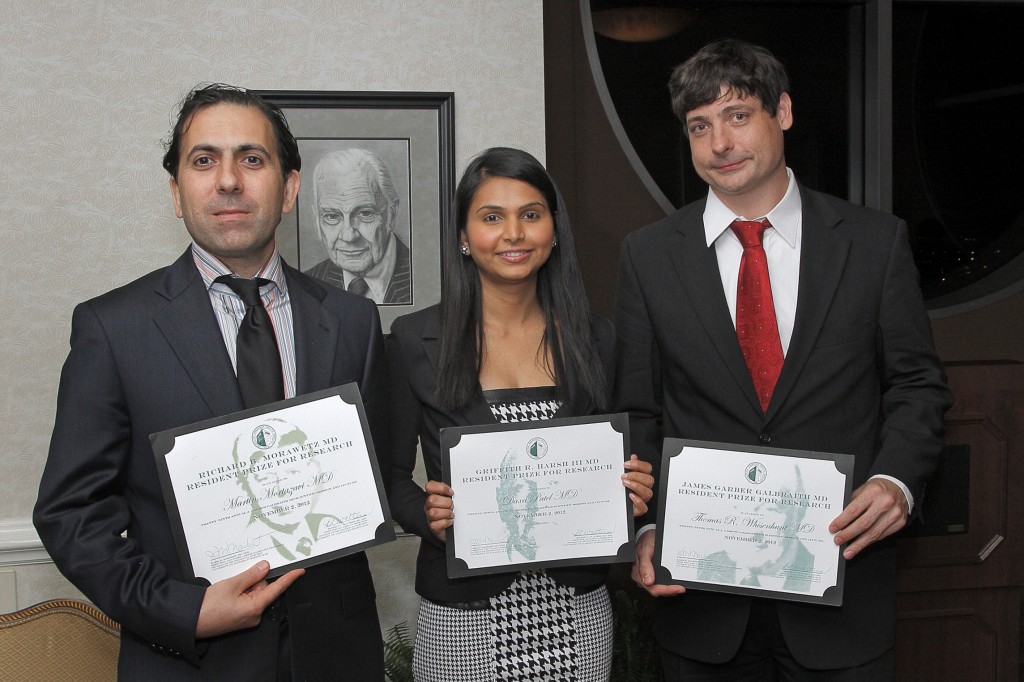 2012 Award Winners, Left to right: Third place – Richard B. Morawetz, M.D., Resident Prize for Research: Martin Mortazavi, M.D.; Second place – Griffith Rutherford Harsh III, M.D., Resident Prize for Research: Daxa Patel, M.D.; First place – James Garber Galbraith, M.D., Resident Prize for Research: Thomas Whisenhunt, M.D.
2012 Award Winners, Left to right: Third place – Richard B. Morawetz, M.D., Resident Prize for Research: Martin Mortazavi, M.D.; Second place – Griffith Rutherford Harsh III, M.D., Resident Prize for Research: Daxa Patel, M.D.; First place – James Garber Galbraith, M.D., Resident Prize for Research: Thomas Whisenhunt, M.D.
UAB Neurosurgery Granted Departmental Status
The Division of Neurosurgery will become the Department of Neurosurgery on October 1, 2013, elevating the profile of an already world-renowned program. To read the article on the School of Medicine’s website, click here. For further reading, visit these sites:
Dr. James M. Markert Elected Fellow of the American Surgical Association
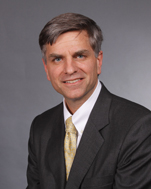 James M. Markert, MD was elected a Fellow of the American Surgical Association (ASA) at their annual meeting in April 2013. ASA is America’s oldest and most prestigious surgical association, whose members are the world’s leading surgeons. The mission of the ASA ”is to be the premier organization for surgical science and scholarship and to provide a national forum for presenting the developing state of the art and science of general and sub-specialty surgery and the elevation of the standards of the medical/surgical profession.”
James M. Markert, MD was elected a Fellow of the American Surgical Association (ASA) at their annual meeting in April 2013. ASA is America’s oldest and most prestigious surgical association, whose members are the world’s leading surgeons. The mission of the ASA ”is to be the premier organization for surgical science and scholarship and to provide a national forum for presenting the developing state of the art and science of general and sub-specialty surgery and the elevation of the standards of the medical/surgical profession.”
UAB Neurosurgeons Ranked Among the Top One Percent in the Nation by Peers
UAB physicians James M. Markert, MD; Barton L. Guthrie, MD; Mark N. Hadley, MD; and Jerry W. Oakes, MD have been recognized by a group of their peers for their outstanding work in neurosurgery. They have also been identified as the top 1% in their field by U.S. News Top Doctors.
Dr. Mark N. Hadley Named Director of the American Board of Neurological Surgery
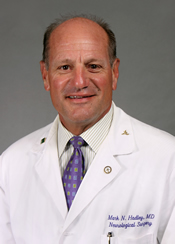 Mark N. Hadley, M.D., professor in the Division of Neurosurgery in the University of Alabama at Birmingham Heersink School of Medicine, has been named to a six-year term as a director of the American Board of Neurological Surgery.
Mark N. Hadley, M.D., professor in the Division of Neurosurgery in the University of Alabama at Birmingham Heersink School of Medicine, has been named to a six-year term as a director of the American Board of Neurological Surgery.ABNS is the primary professional organization in the field of neurosurgery and is the agency that approves board-certification for neurosurgeons. ABNS also works to maintain and elevate professional standards in the field and encourage the study and improve the practice of neurosurgery.
"Selection as a director of the ABNS is a great honor that brings with it great responsibility," said James Markert, M.D., Ph.D., division director for neurosurgery at UAB. "Mark Hadley is an outstanding choice to advance the goals of the ABNS, as he has demonstrated time and again throughout his career that he is a superlative surgeon, educator and researcher."
Cytochrome c Oxidase in Glioma: A Potential Marker and Therapeutic Target
In UAB's Division of Neurosurgery, Corinne E. Griguer, PhD and her research team is searching for potential therapeutic targets in malignant glioma. A recent recipient of a Research Project Grant, her research interests include exploring the bioenergetic pathways involved in the development and progression of malignant glioma. Patient chemoresistance to temozolomide (TMZ), the frontline drug of choice to treat glioblastoma multiforme, limits treatment options. Griguer and her colleagues at the Southern Research Institute and University of Geneva have determined that increased cytochrome c oxidase (CcO) activity is associated with TMZ resistance in glioblastoma multiforme. In the future, analysis of CcO activity in gliomas may be used to predict overall survival and progression free survivals in patients with malignant glioma. CcO activity may serve as a target for small molecule inhibitiors that could be used to block acquisition of chemoresistance in glioma. Reversing TMZ insensitivity may lead to improved outcomes in patients with GBM.